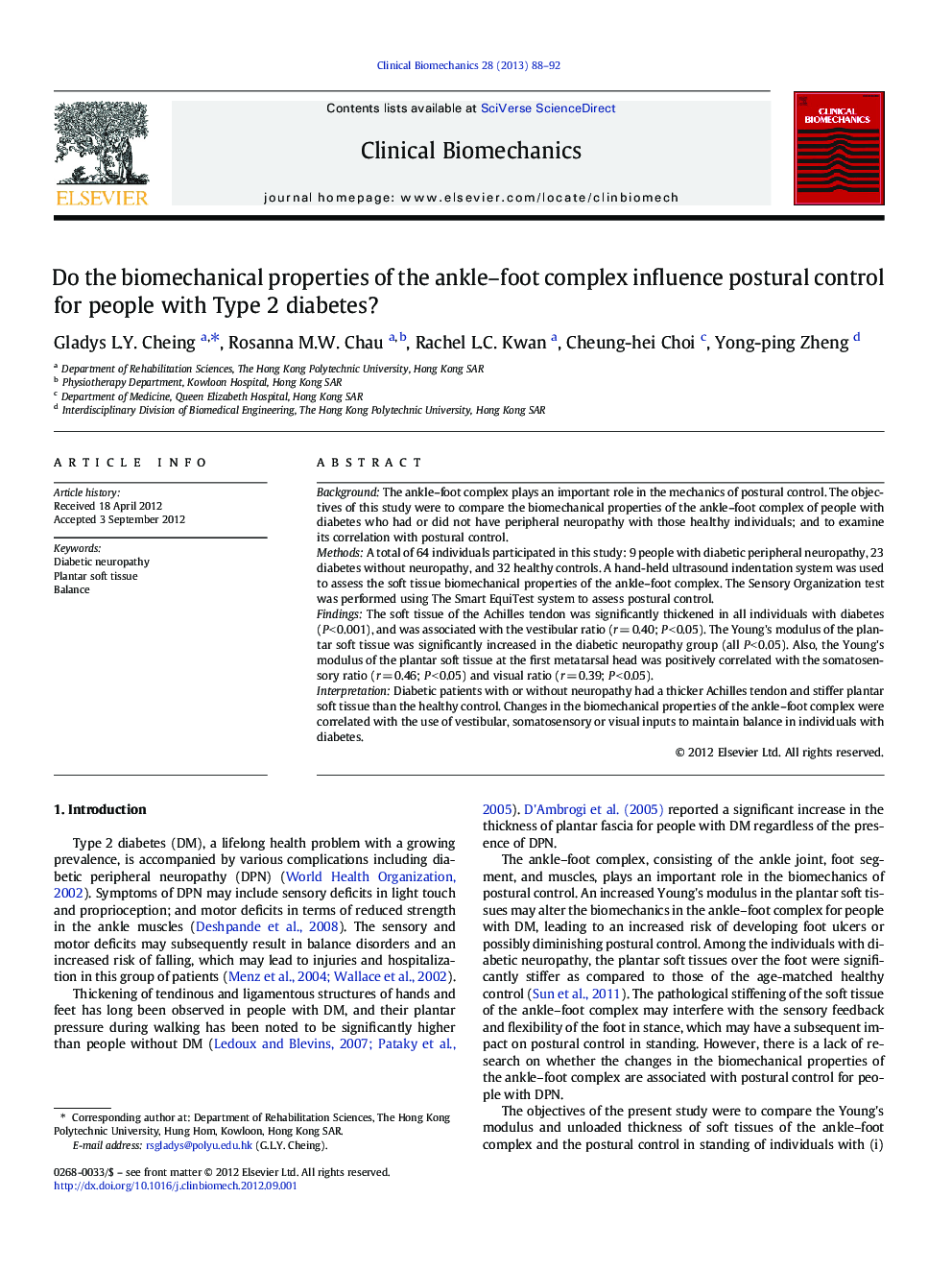| Article ID | Journal | Published Year | Pages | File Type |
|---|---|---|---|---|
| 4050397 | Clinical Biomechanics | 2013 | 5 Pages |
BackgroundThe ankle–foot complex plays an important role in the mechanics of postural control. The objectives of this study were to compare the biomechanical properties of the ankle–foot complex of people with diabetes who had or did not have peripheral neuropathy with those healthy individuals; and to examine its correlation with postural control.MethodsA total of 64 individuals participated in this study: 9 people with diabetic peripheral neuropathy, 23 diabetes without neuropathy, and 32 healthy controls. A hand-held ultrasound indentation system was used to assess the soft tissue biomechanical properties of the ankle–foot complex. The Sensory Organization test was performed using The Smart EquiTest system to assess postural control.FindingsThe soft tissue of the Achilles tendon was significantly thickened in all individuals with diabetes (P < 0.001), and was associated with the vestibular ratio (r = 0.40; P < 0.05). The Young's modulus of the plantar soft tissue was significantly increased in the diabetic neuropathy group (all P < 0.05). Also, the Young's modulus of the plantar soft tissue at the first metatarsal head was positively correlated with the somatosensory ratio (r = 0.46; P < 0.05) and visual ratio (r = 0.39; P < 0.05).InterpretationDiabetic patients with or without neuropathy had a thicker Achilles tendon and stiffer plantar soft tissue than the healthy control. Changes in the biomechanical properties of the ankle–foot complex were correlated with the use of vestibular, somatosensory or visual inputs to maintain balance in individuals with diabetes.
